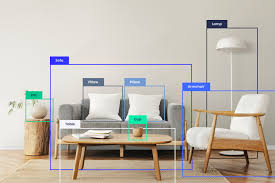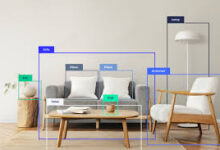Restaurant Chair Styles

Choosing chairs for a restaurant is no small decision. The style, comfort, and overall look of the seating can shape a guest’s first impression and influence how long they choose to stay. In the past, restaurant owners had to rely on printed catalogs, static images, or the occasional showroom visit to make these choices.
Today, virtual reality preview apps are changing everything. These tools allow clients to walk through their own dining spaces and test restaurant furniture styles as if they were already in place. The experience removes uncertainty and makes it far easier to settle on the right choice.
VR is more than a passing trend. The VR and AR retail market, worth billions today, is projected to grow rapidly in the coming years. Nearly 40 percent of furniture purchases already take place online, and more than half of retailers plan to integrate immersive technologies into their shopping experience. For restaurants, the benefits are clear. Better decisions, faster timelines, and fewer costly mistakes.
How VR Chair Previews Work
The process starts with precise 3D modeling. Manufacturers create accurate digital replicas of their chairs, complete with dimensions, fabric textures, and realistic finishes. Once built, these models are rendered in high detail, ready to be placed into a client’s virtual dining room.
Some VR preview apps extend into augmented reality. Restaurant owners can point their mobile device at a room and instantly view different chair styles positioned in the space. Real‑time adjustments for colors, fabrics, and frame styles make it possible to see endless combinations without ordering a single sample.
Thanks to automated conversion tools, CAD drawings can be turned into VR‑ready models in a fraction of the time it once took. The latest systems even scale furniture automatically to match scanned room dimensions with near‑perfect accuracy, ensuring the preview is as close to reality as possible.
Why Owners and Designers Are Turning to VR
There’s something powerful about walking through a virtual dining room and seeing seating arrangements from every angle. Scale, spacing, and sightlines become clear immediately. This isn’t something a flat image or a paper catalog can deliver.
For designers, the efficiency is unmatched. They can collaborate with clients without multiple showroom visits or back‑and‑forth shipping of sample chairs. Owners, in turn, can experiment freely, trying bold new looks without the fear of making an expensive mistake.
VR doesn’t just improve confidence, it often increases order value. Seeing premium finishes or upgraded frames in the actual restaurant space makes these choices easier to justify, and owners are more willing to invest in higher‑quality designs when they can visualize them perfectly.
Reducing Risk and Boosting Confidence
Good seating decisions go beyond style. Chairs need to complement flooring, work with lighting, and harmonize with table heights. VR previews make it possible to evaluate all of this together, in context, before spending a single dollar on physical stock.
By offering a “try before you buy” experience, VR cuts down on returns and post‑delivery disappointments. Clients can switch between multiple options in minutes, narrowing the selection to what truly works.
The benefits also extend to collaboration. Disagreements between owners, partners, and designers are easier to resolve when everyone can stand in the same virtual room. For restaurant groups with multiple locations, recorded VR sessions can be shared so decision‑makers in different cities see exactly the same preview.
Making VR Part of the Sales Experience
Suppliers have several ways to offer VR previews. Some send clients a simple QR code or link that launches a virtual showroom. Others arrange live sessions where a sales consultant guides the client through different styles and layouts.
Once inside the preview, clients can adjust fabrics, finishes, and even leg styles while watching both the look and the estimated price update in real time. This level of customization makes the process interactive and engaging.
For multi‑location chains, VR makes it possible to preview the same chair design in different branch layouts. Consistency is maintained without the cost or time required for physical site visits, and approvals can happen much faster.
Practical Factors to Consider
Although VR is increasingly accessible, suppliers still need to plan for the investment. Headsets, 3D asset creation, and VR platform subscriptions carry upfront costs. The good news is that once models are created, they can be updated and reused indefinitely.
Training is another key step. Sales teams should feel confident running a VR session, helping clients interact with the system, and explaining how to switch styles. Maintaining a well‑curated library of current chair designs ensures that clients always have the latest options to explore.
The payoff is often quick. Many suppliers find that their VR investment is recovered within months. With fewer sample orders, faster approvals, and happier clients, the technology often pays for itself faster than expected.
The Future of VR in Furniture Shopping
The possibilities for VR in restaurant furniture selection are still expanding. AI could soon analyze a brand’s style and automatically suggest chair designs that match its identity. Wearable VR devices and advanced camera passthrough could allow previews to be placed directly into real‑world spaces without scanning.
Collaboration will also get easier. Virtual showrooms may become shared spaces where owners, designers, and investors can meet, no matter where they are. Haptic feedback could even give clients a sense of how the chairs feel, not just how they look.
As VR hardware becomes more affordable, immersive previews will likely become a standard part of the restaurant furniture buying process. For clients and suppliers alike, this shift promises faster decisions, better outcomes, and more creative freedom.
Virtual Seating Choices That Inspire Confidence
Restaurant seating decisions shape the entire dining experience. VR takes the uncertainty out of these choices, allowing owners to step into their dining rooms and see how each option works in the real setting. It speeds up approvals, reduces costly mistakes, and often sparks more creative, ambitious design ideas.
For suppliers, integrating VR into the sales process is a smart move. It improves client satisfaction, reduces returns, and positions their business as a forward‑thinking industry leader. For restaurant owners, it delivers peace of mind and the assurance that every chair will look and fit exactly as intended.
Virtual reality is no longer a futuristic concept. It’s a practical, proven tool for better design decisions. And for restaurants, it means finding the perfect seat has never been easier, more accurate, or more exciting.





